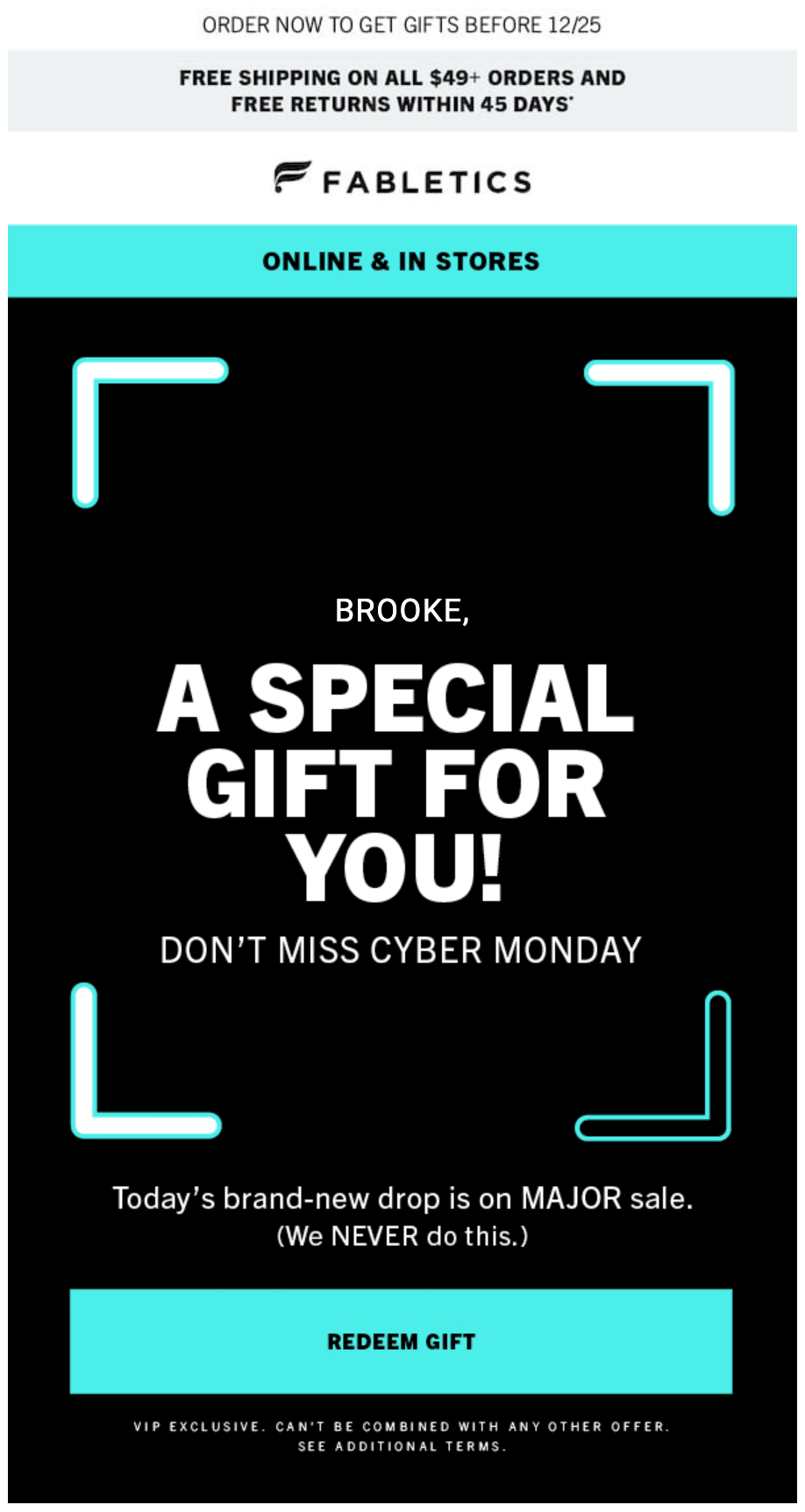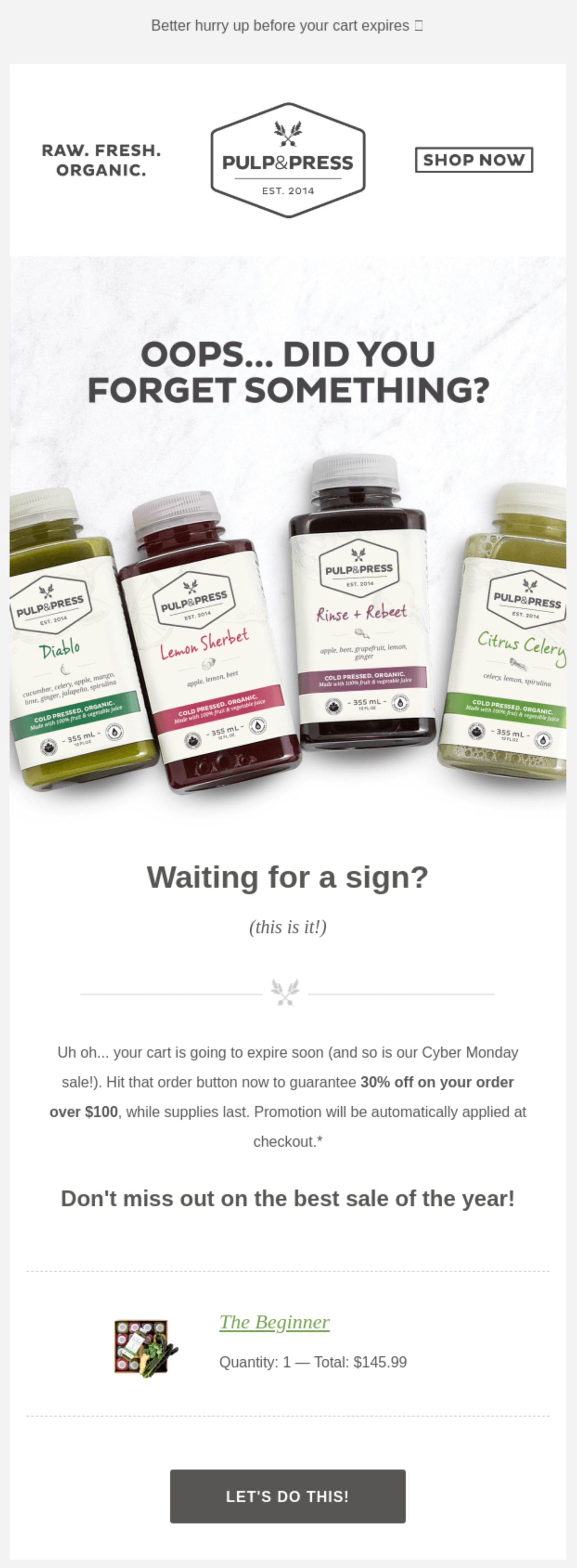Cyber Monday is often viewed as Black Friday’s little sister. Falling on the Monday after Thanksgiving, Cyber Monday was introduced as a second day of pre-holiday savings. But, rather than shopping in-store, Cyber Monday is all about shopping online.
In 2005 the National Retail Federation (NRF) introduced the concept of Cyber Monday. According to Reader’s Digest, Ellen Davis, NRF’s SVP of Research and Strategic Initiatives, noticed an increase in online shopping the Monday after Thanksgiving. Her theory was that online shopping allowed parents to purchase holiday gifts more secretly, compared to shopping in-store.
After the NRF coined the name “Cyber Monday,” the holiday took off and online sales exploded. In fact, starting in 2014, Cyber Monday became the biggest online shopping day in the country.
Today—especially in the wake of the pandemic—we’re seeing a skew towards digital. In fact, the line between Black Friday (a historically in-store event) and Cyber Monday is blurring as most, if not all, Black Friday deals are offered online.
With Black Friday stealing some of the thunder, Cyber Monday campaigns have to pack an extra punch to capture customers’ attention and deliver high ROI. One way brands can elevate their Cyber Monday campaigns is through individualization.
Why Individualization Matters
We know you know this by now, but just for good measure, we want to quickly review why individualization is crucial for modern marketing campaigns. According to Statista, in 2022
“[of surveyed] consumers who purchased something online in the past six months from various countries across the globe, 62 percent stated that a brand would lose their loyalty if it delivered an unpersonalized experience.” By some brands demonstrating the ability to personalize, customers now expect it from all brands.
Personalization isn’t a nice to have, it’s a need to have. Taking personalization a step further is when you get individualization. Individualization gives brands the ability to connect with customers like they actually know them, creating a one-to-one relationship.
Adding Individualization to Cyber Monday Campaigns
It may seem like magic, but individualization isn’t some hard-to-reach, unachievable goal. With the right tools and techniques in place, brands can implement small but effective changes that deliver a highly individualized experience without requiring a heavy manual lift.
Call Them By Their Name
Cyber Monday deals aren’t just for new customers. Brands have existing customers who can also take advantage of steep discounts. But, with so many Cyber Monday promotions being blasted to inboxes, it can be challenging for brands to stand out. One way to connect with existing customers is by incorporating their existing data into messages.
Let’s start with something simple. The most basic customer data you have access to is their name. You’d think including a customer name would be table stakes at this point, but with huge promotional campaigns, like Cyber Monday, it often gets overlooked. Fabletics, the fitness apparel brand, was able to stand out in a sea of Cyber Monday emails just by using the customer’s name.


Fabletics individualized Cyber Monday promotions by adding the customer’s name to the copy.
With an automated, content field built into an email template, Fabletics was able to incorporate foundational user data to demonstrate individualization—without increasing the workload on their marketing team’s plate.
Combine Abandoned Cart and Your Sale
Having a big sale is going to draw in the web traffic, sure, but combining the big sale with an individualized element can lead to even better results. The abandoned cart (or even abandoned browse) email is an excellent example of individualization. Through the use of dynamic content triggers, brands can include items in the email specific to each customer.
Pulp & Press, a cold-pressed juice brand, sent this abandoned cart email out to customers. This email highlights not only the item left in the customer’s cart (“The Beginner”), but it also highlights the “best sale of the year.” They make sure to tell their customers that not only is their cart going to expire, but the Cyber Monday sale is too.


Pulp & Press layers their Cyber Monday sale on top of an abandoned cart email to increase the likelihood of customer engagement. Source: Really Good Emails.
Abandoned cart emails have an average conversion rate of over 10%. Cyber Monday emails sent on the day have an average conversion rate of 12.7%. This added layer of individualization on top of a huge discount can bump up not only email engagement, but can lead to more purchases.
Add a Location-Based Angle
If a customer has purchased something from your brand, you likely have their zip code. This zip code can be used to send custom, location-based emails to each individual customer. Adding these small details can not only save your marketing team time—it’s all automated—but it can lay the foundation for a long-lasting, loyal customer.
Yelp, the review platform, sent out a location-based roundup around Cyber Monday. Based on the user’s location, and where they last searched, Yelp was able to compile a list of restaurants in the customer’s area to promote their Cyber Monday deals. The content is not only relevant to the individual because it’s location-based, but it’s also timely, given that some of the Cyber Monday deals expire.


Yelp created location-based Cyber Monday emails using just the user’s location to highlight Cyber Monday deals from local businesses.
Location-based content is also highly relevant when customers are not sitting at home. Everyone has emails on their phones so if this user was out and about, they may use this email as a resource when looking for great deals in their area. Small additions to your emails—using customer information you already have—can create unique, highly-individualized customer experiences.
Make it Individualized
The holidays can be anything but jolly for your brand’s marketing team. We get it. There’s pressure to not only deliver content, but have the content resonate with audiences and increase conversions. By incorporating automated elements like custom journeys and real-time triggers, adding individualized, unique content can make a huge difference in your bottom line without overwhelming your already-strapped marketing team.
Iterable can help your team deliver individualized messages without having to completely re-architect your existing infrastructure. Bring the joy back to your holiday season and hit the ground running by adding the right tools to your marketing tech stack.
Looking to get ahead of the holiday madness? Schedule an Iterable demo to learn more about how you can take advantage of individualization and automation capabilities.
































